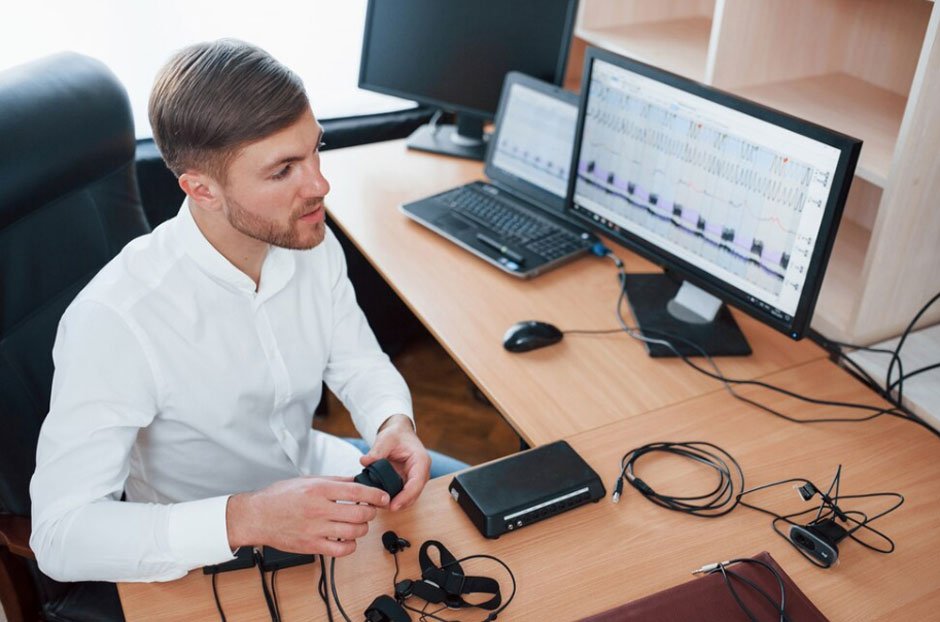Diagnostics is an integral part of a wide variety of industries. Especially those related to technology, manufacturing, medicine, and many other areas. Timely detection of problems depends on the effectiveness of diagnostic tools. This, in turn, allows you to solve them quickly and accurately. So, below we will look at the main tools and methods used to conduct effective diagnostics. We will also try to provide comprehensive information about the diagnostic process.
Overview of Diagnostic Tools
The first step to conducting effective testing is to understand the different methods that can be used. These include traditional and modern technologies. The latter allow you to achieve a high level of accuracy and therefore efficiency.
Traditional diagnostic methods:
- visual inspection,
- manual tests,
- basic measurements.
They can be effective in identifying obvious defects or problems. However, such methods have their limitations in terms of the ability to detect hidden defects and accuracy.
Modern diagnostics technology includes the use of:
- sophisticated software tools,
- analytical equipment,
- automated systems.
They allow:
- to conduct detailed data analysis,
- to identify problems at early stages,
- to offer optimal solutions for their elimination.
For example, computer diagnostics uses programs to detect malfunctions, both hardware and software. One of the most popular methods is to run Mac diagnostics, which allows users to quickly determine the condition of their device. Mac diagnostics includes various stages. This includes wireless diagnostics Mac, which allows you to identify network and connection problems. It’s also important to note that not all problems can be solved using software methods. For example, in the case of medical testing, special devices and technologies are used to detect diseases at early stages. However, if your work is directly related to the Mac and its efficiency and functionality are crucial, then understanding how to diagnose the gadget is essential.
Computer Diagnostics
Software tools
Modern computer systems use various tools and technologies for testing. These can be utilities for checking:
- the state of hard disks,
- RAM,
- processors,
- and other components.
For example, CrystalDiskInfo, MemTest86, or HWMonitor diagnostics services description can be defined as allowing users to get detailed information about the state of their computers and identify potential problems.
Network tools
Special programs and devices are used to diagnose networks. These can be:
- network traffic analyzers,
- port scanners,
- bandwidth testing utilities, etc.
For example, Wireshark, Nmap, or Speedtest can help you identify problems with network connectivity and performance.
Medical Diagnostics
Visualization methods
Visualization technologies can be considered one of the most important tools in medical testing. They include:
- X-ray,
- computerized tomography (CT),
- magnetic resonance imaging (MRI),
- ultrasound examination.
These methods allow us to obtain images of internal organs and various structures, which are very helpful in making an accurate diagnosis.

Laboratory methods
They include the following tests:
- blood,
- urine,
- and other biological fluids.
These diagnostic methods help to determine:
- the presence of infections,
- the level of various substances in the body
- hormone levels, etc.
Modern laboratory technologies allow for fast and accurate results, which significantly improves the treatment process.
Car Testing
OBD scanners
Special OBD scanners are used to diagnose cars. They are plugged into the car’s diagnostic connector. These scanners allow you to:
- read error codes,
- get information about the engine, transmission, etc.
For example, such devices as ELM327, Autel MaxiCOM, and others provide a high level of accuracy and ease of use.
Battery and electronics testers
Testing car batteries and electronic systems is an important part of car maintenance. For this purpose, special testers are used that allow you to:
- determine the state of the battery,
- the level of charging,
- check the operation of electronic systems.
This helps to identify problems in time and prevent malfunctions in the technological process.
Industrial Diagnostics
Non-destructive testing
In industry, non-destructive testing (NDT) methods are used for testing. These are technologies that allow you to examine materials and products without damaging them. Among them are:
- ultrasonic inspection,
- X-ray inspection,
- magnetic particle inspection, etc.
These methods provide high accuracy, which allows you to detect defects in time and prevent accidents.
Vibration diagnostics
This is another major method of vibration diagnostics. It allows you to:
- determine the condition of mechanical systems,
- identify problems with bearings, gearboxes and other elements.
For this purpose, special sensors and vibration analyzers are used. They help to obtain detailed information about the condition of the equipment.
Results.
Effective diagnostics is key if we want to ensure reliability and safety. The use of modern technologies and tools allows us to identify problems quickly and accurаtely. This certainly significantly improves the quality of service and prevents accidents or malfunctions. From medical imaging methods to industrial non-destructive testing, from computer programs to automоtive scanners, all these diagnostic tools are an integral part of modern life. Using the latest technologies and approaches, we can provide effective analysis and timely problem solving in any field.







